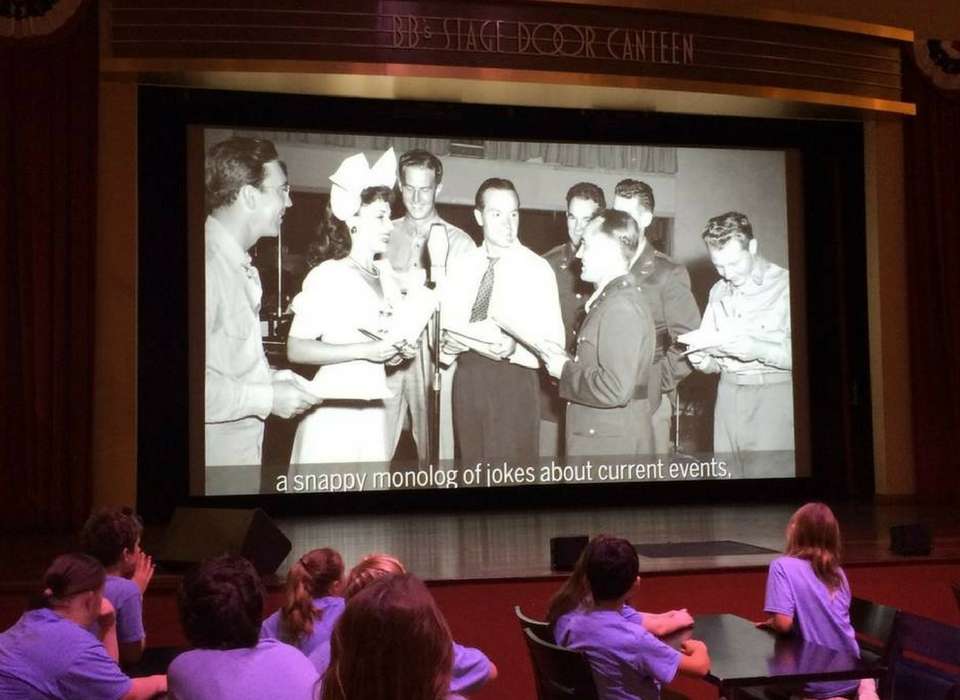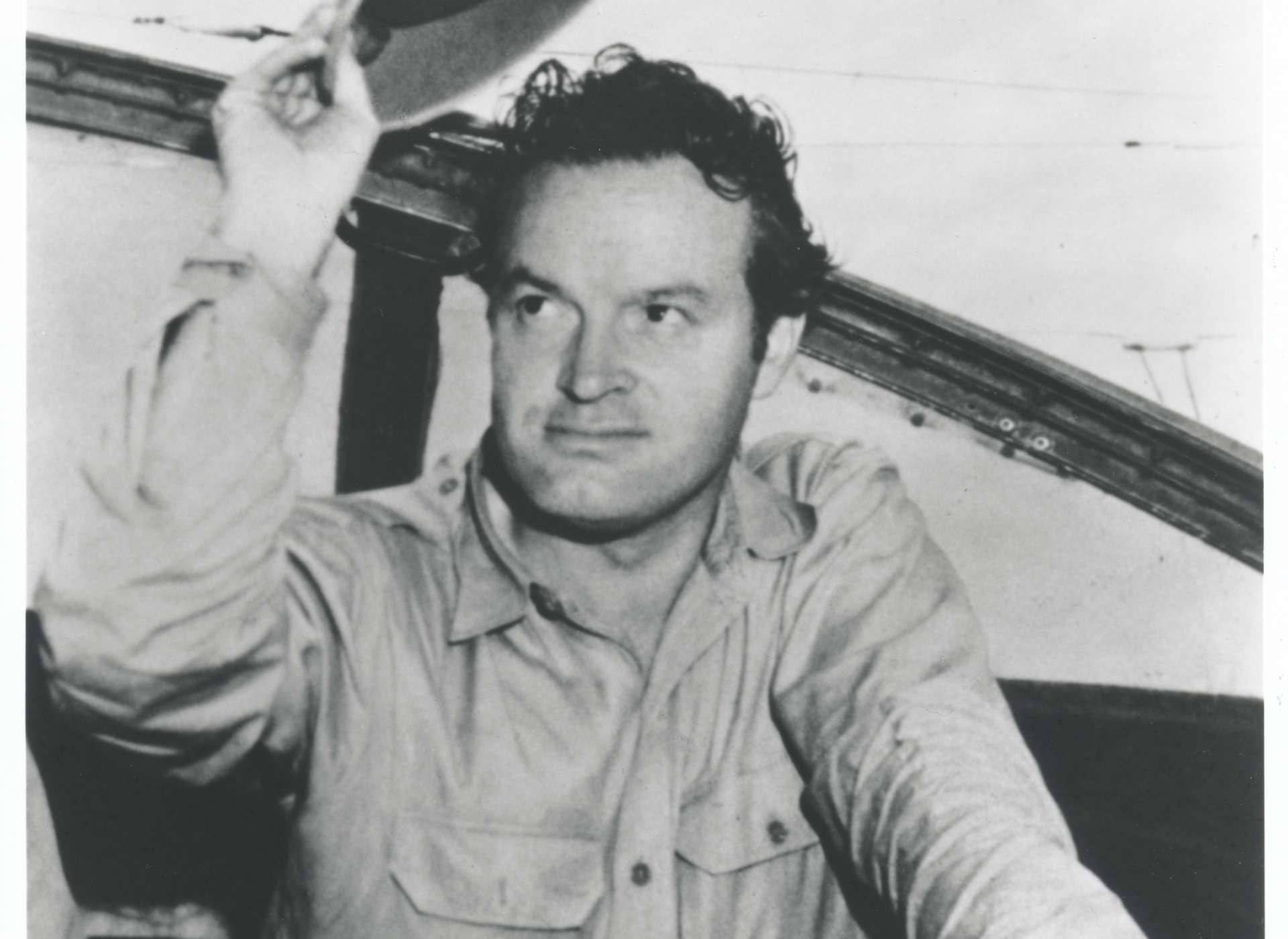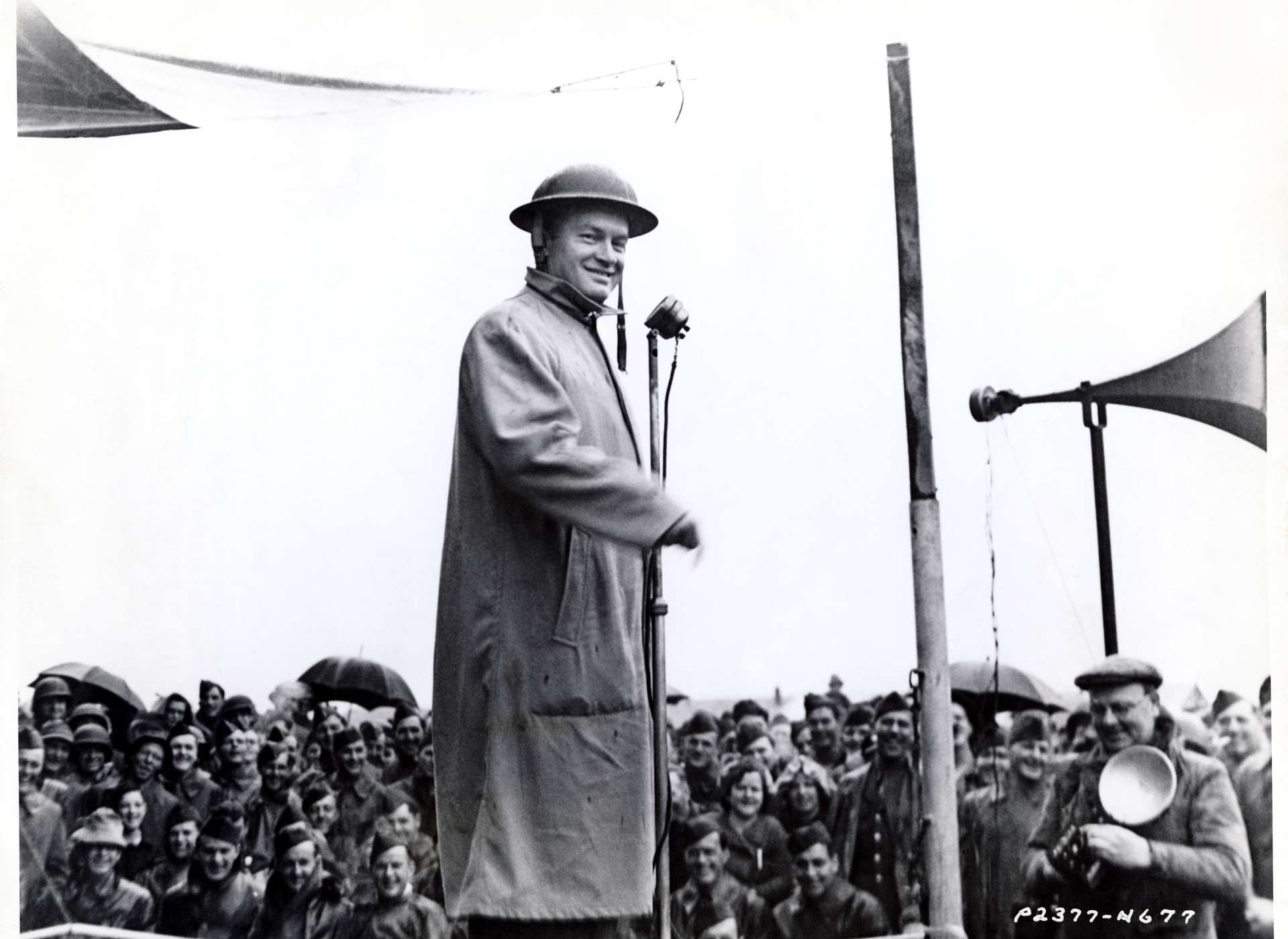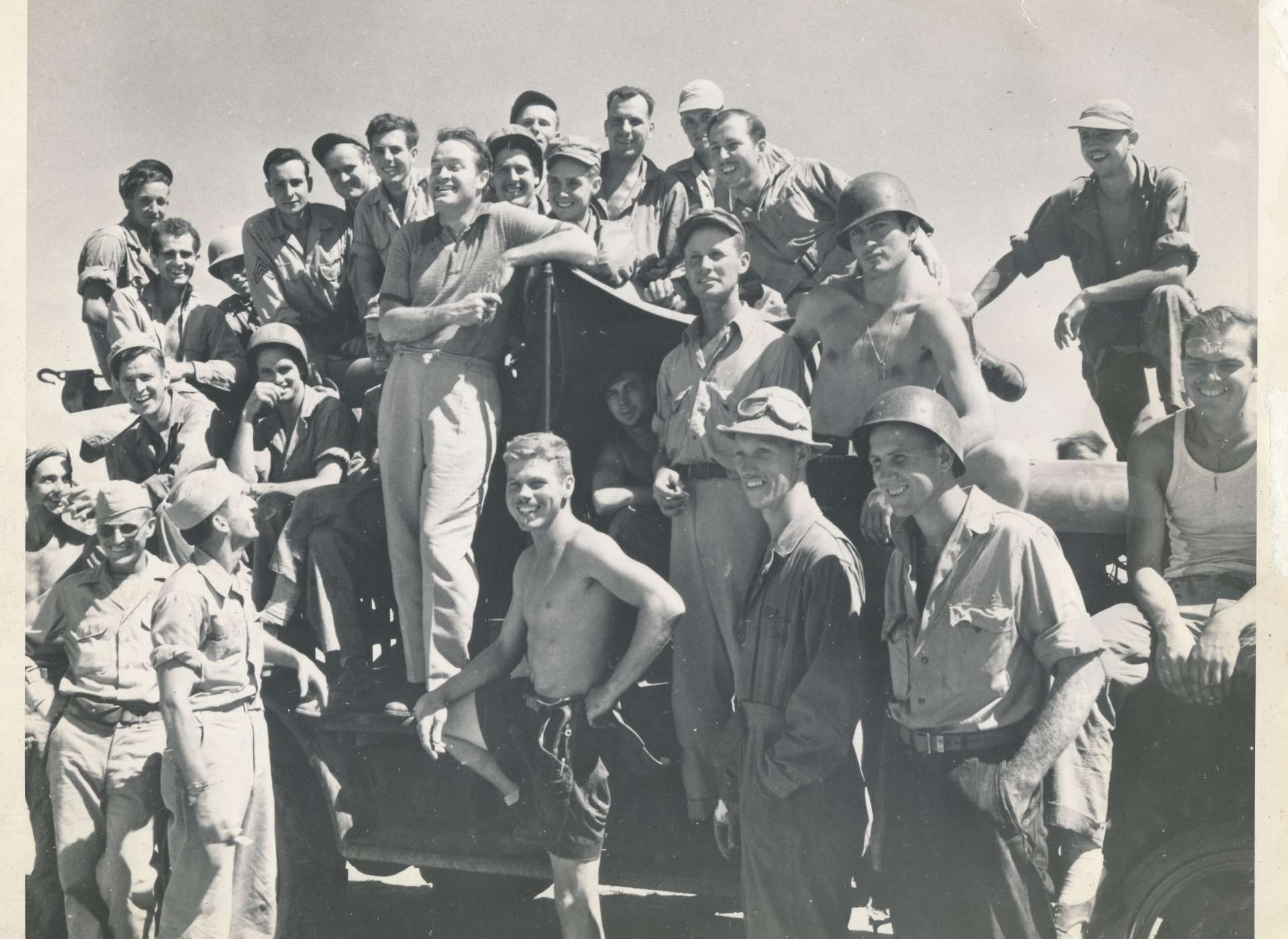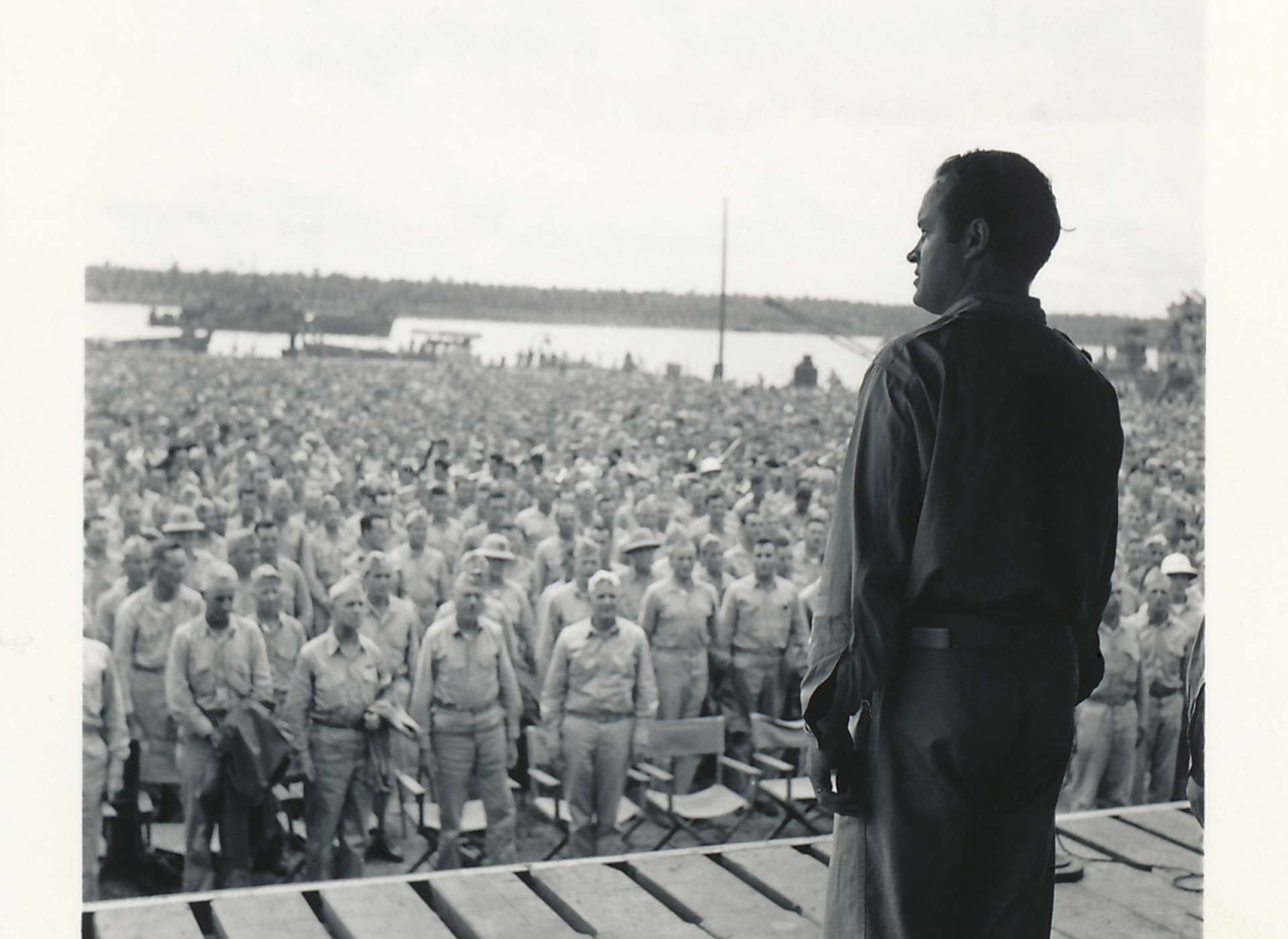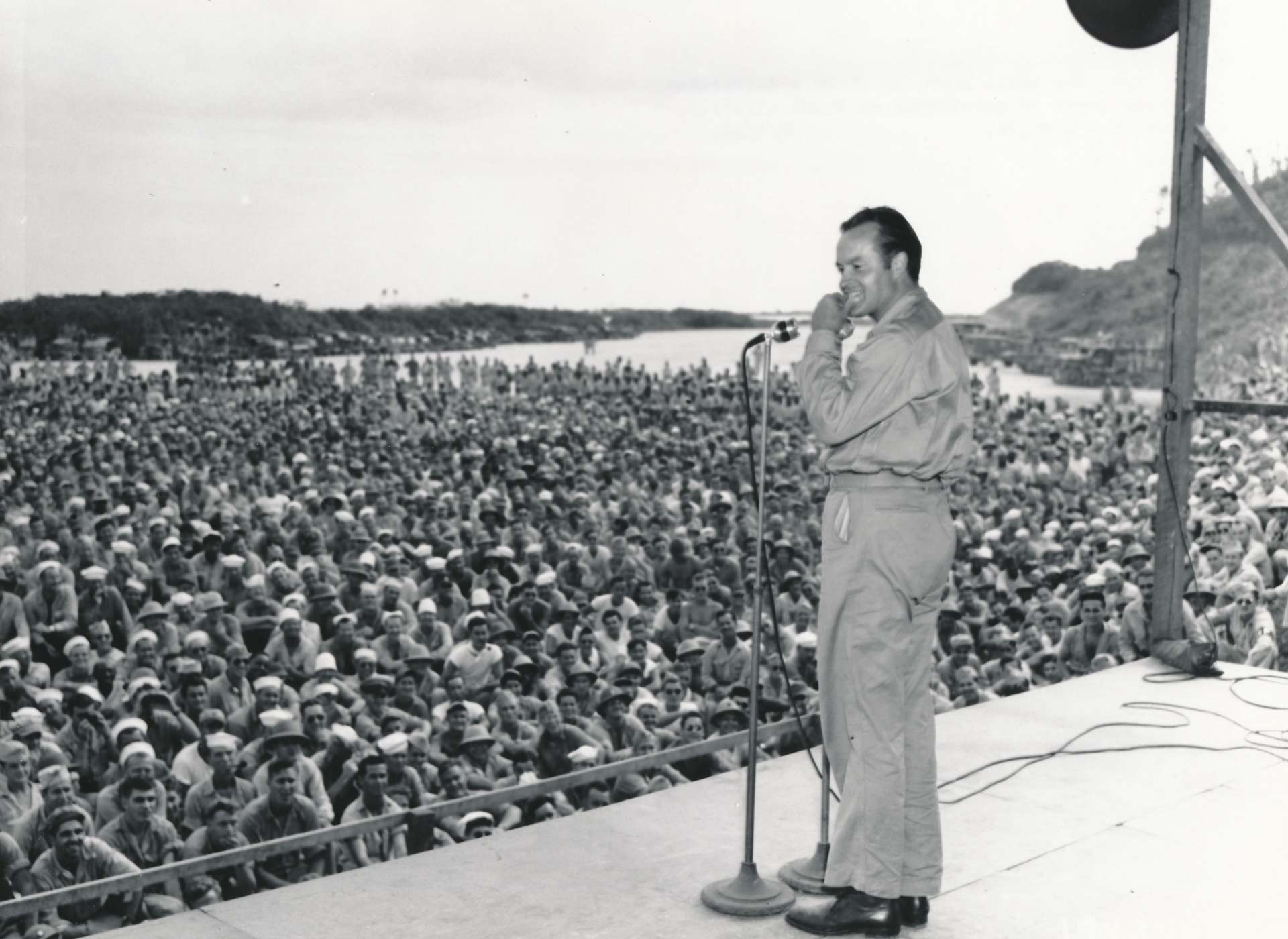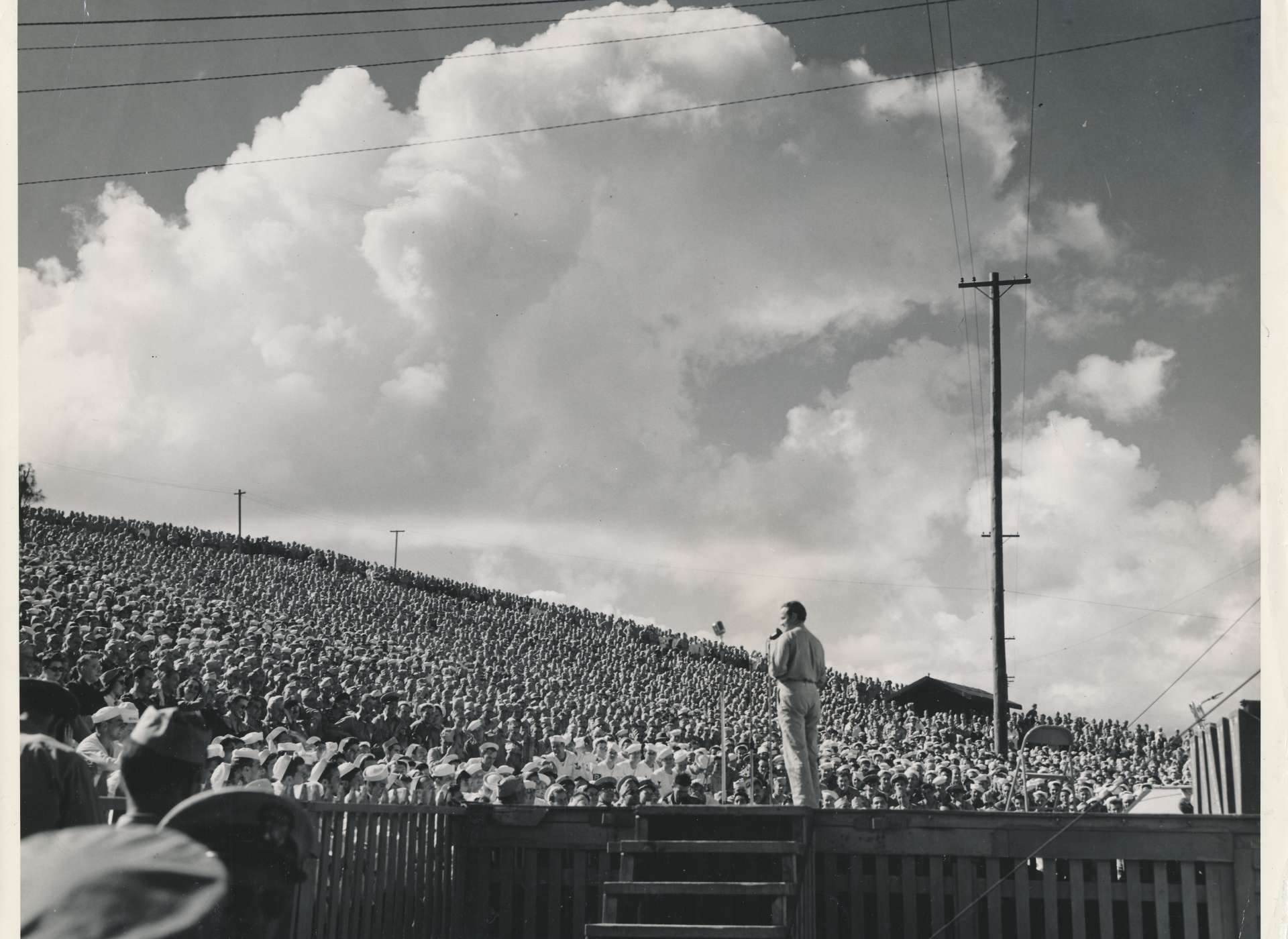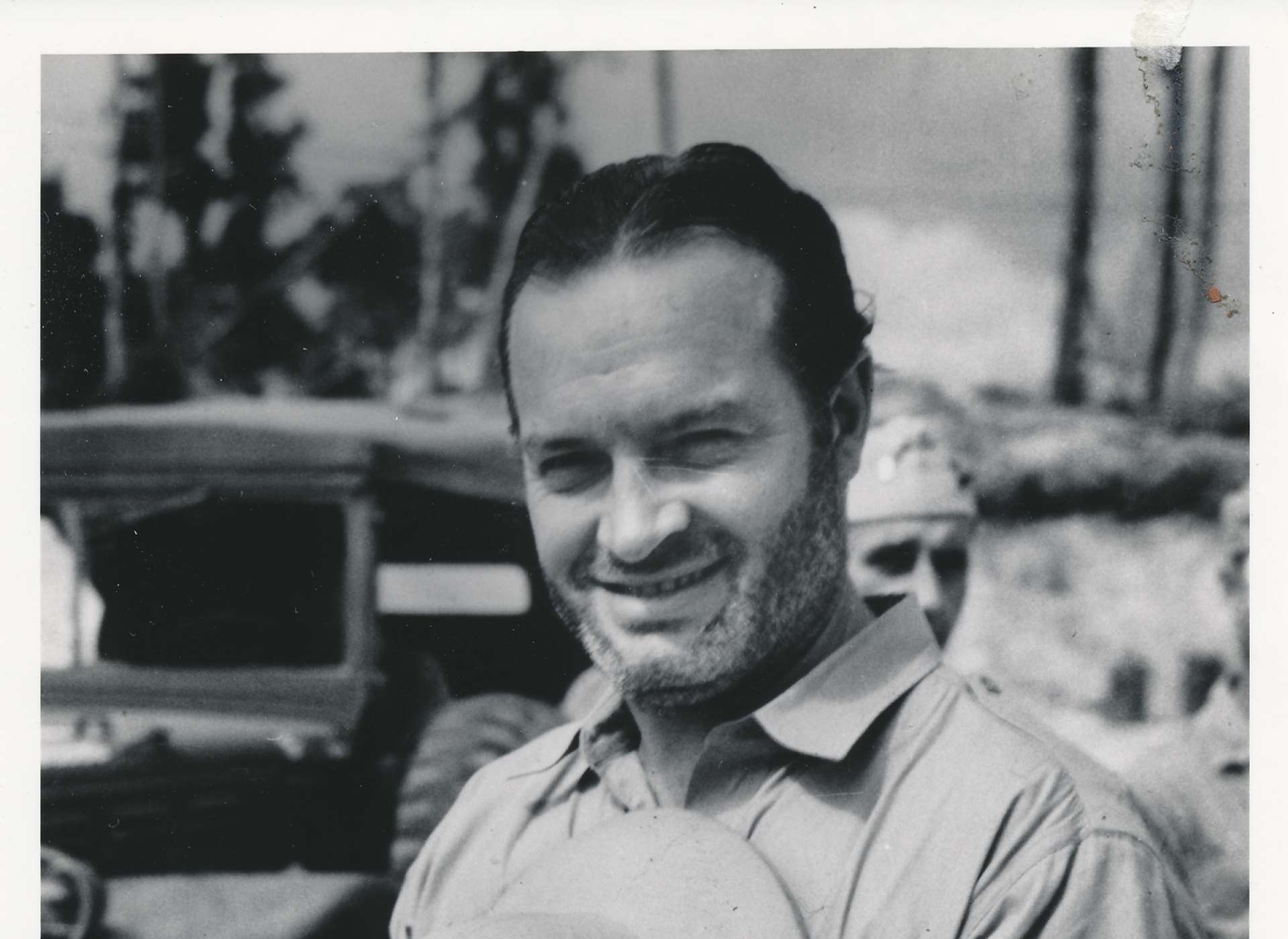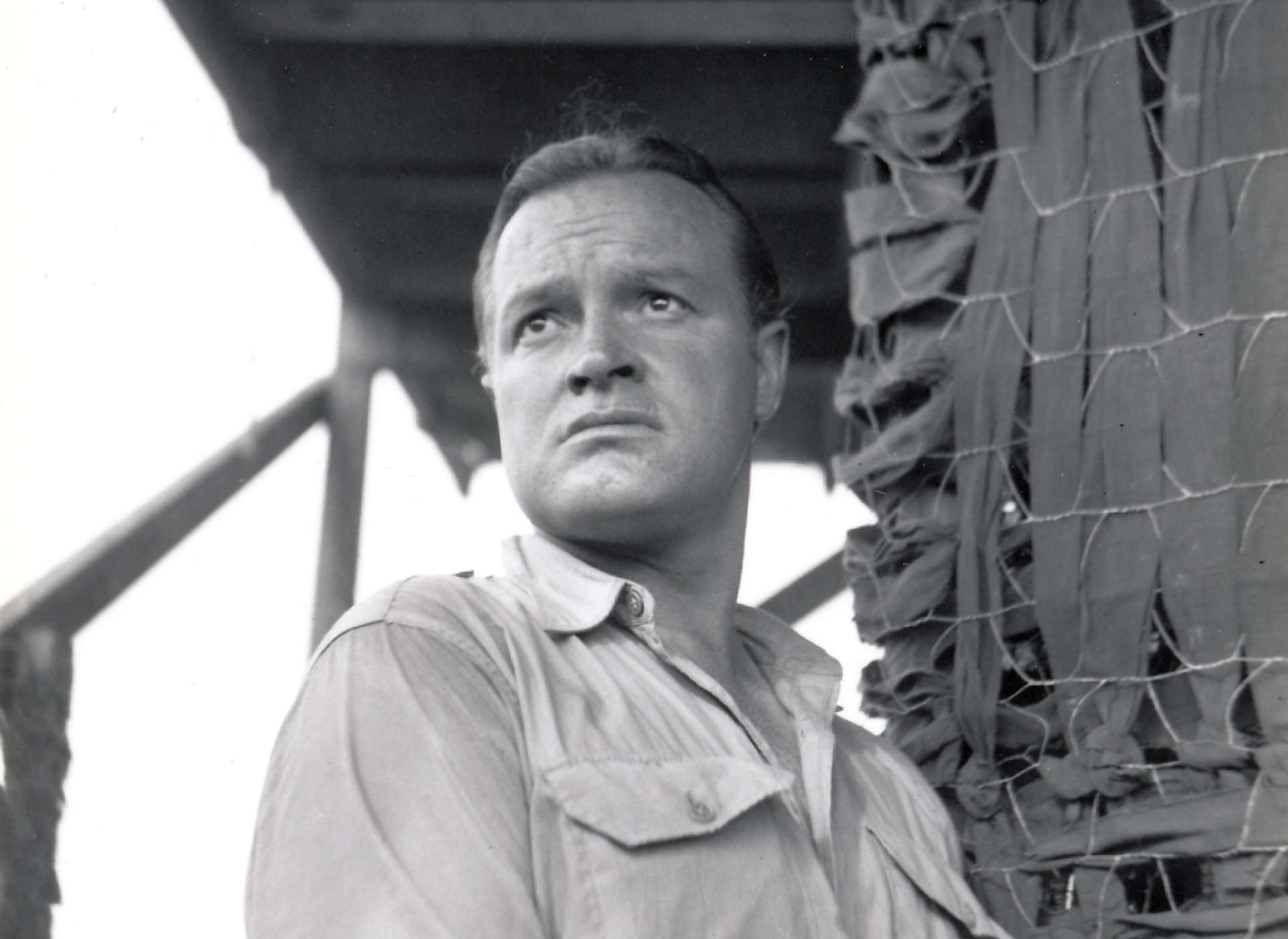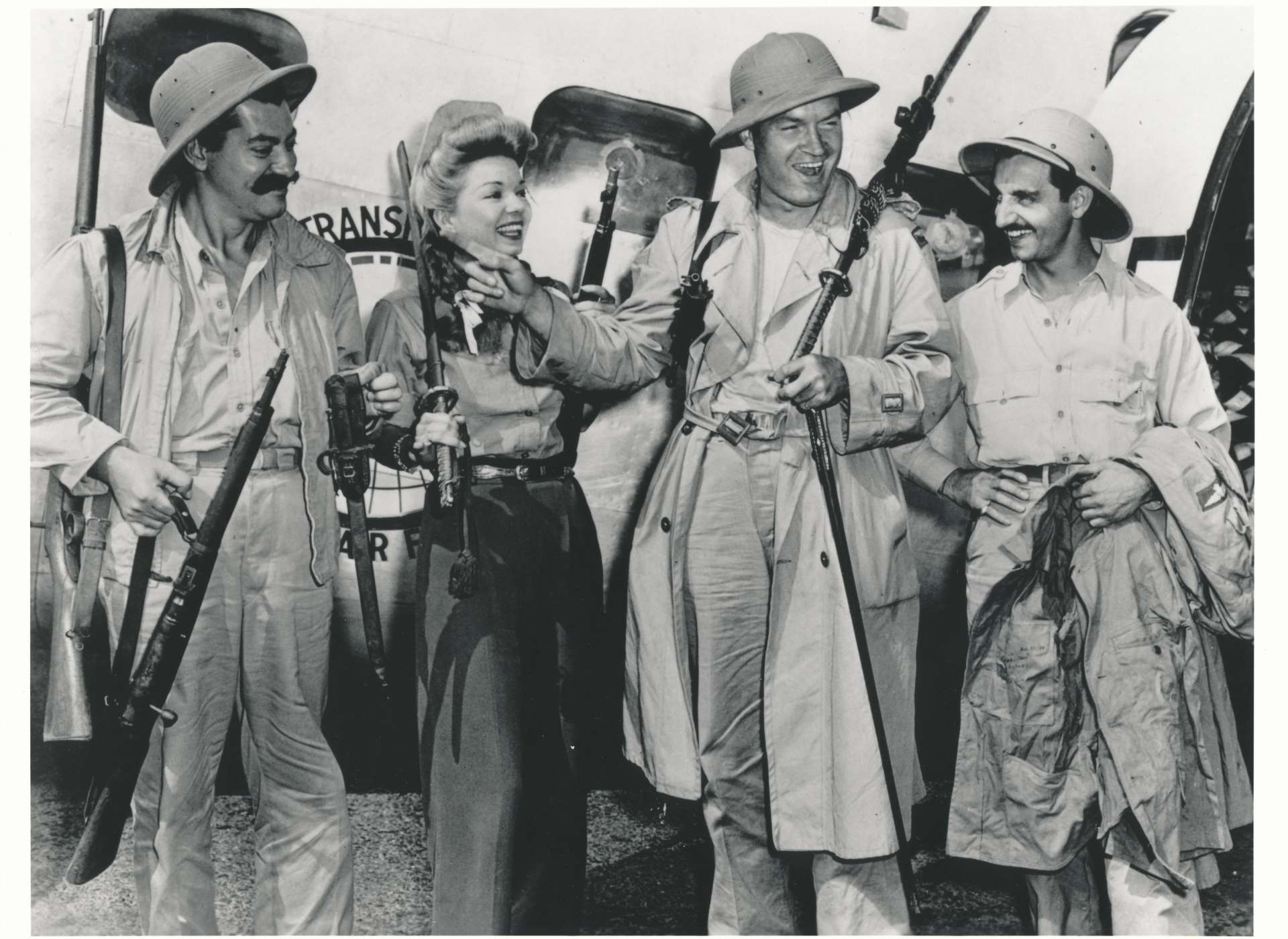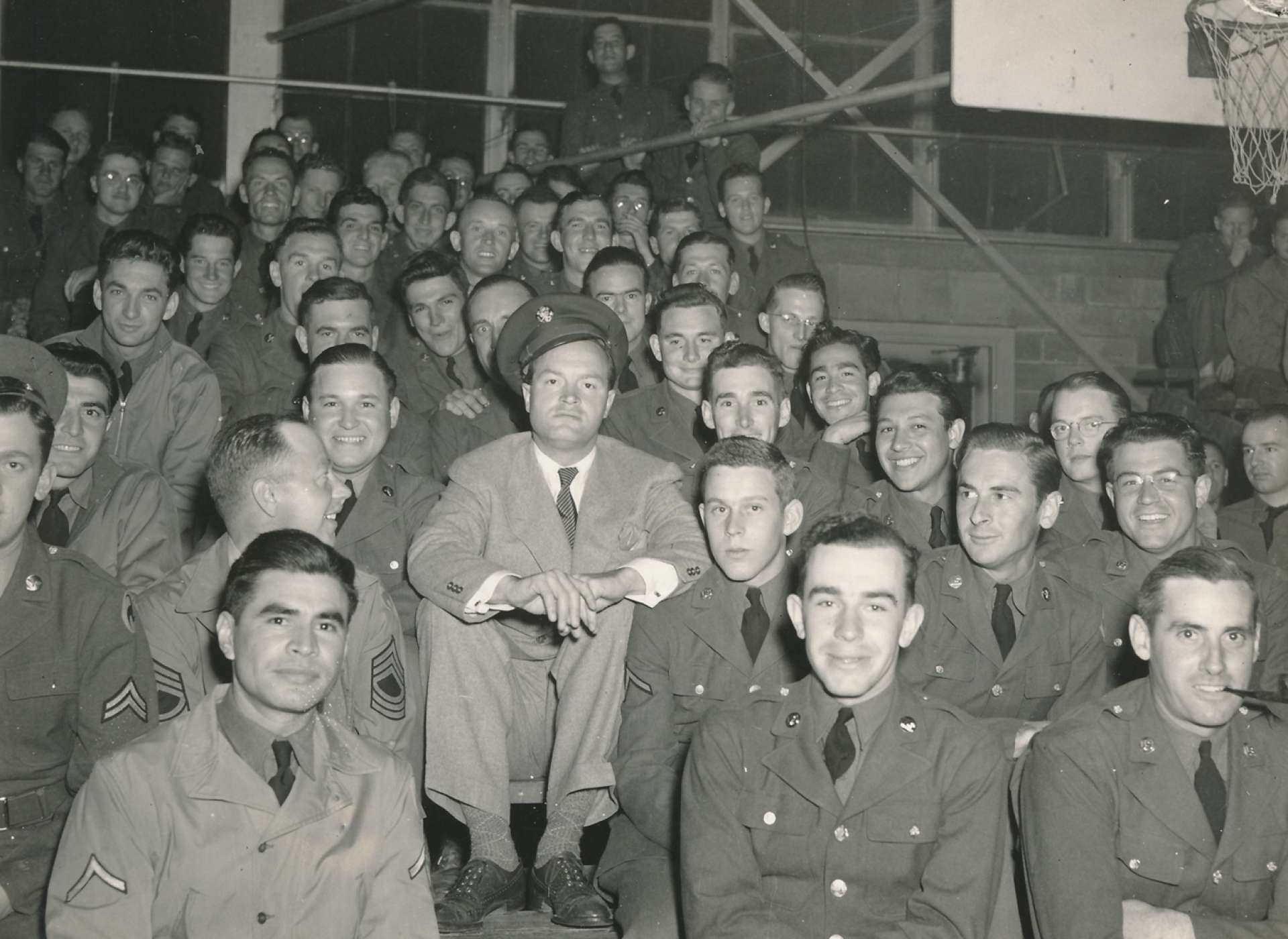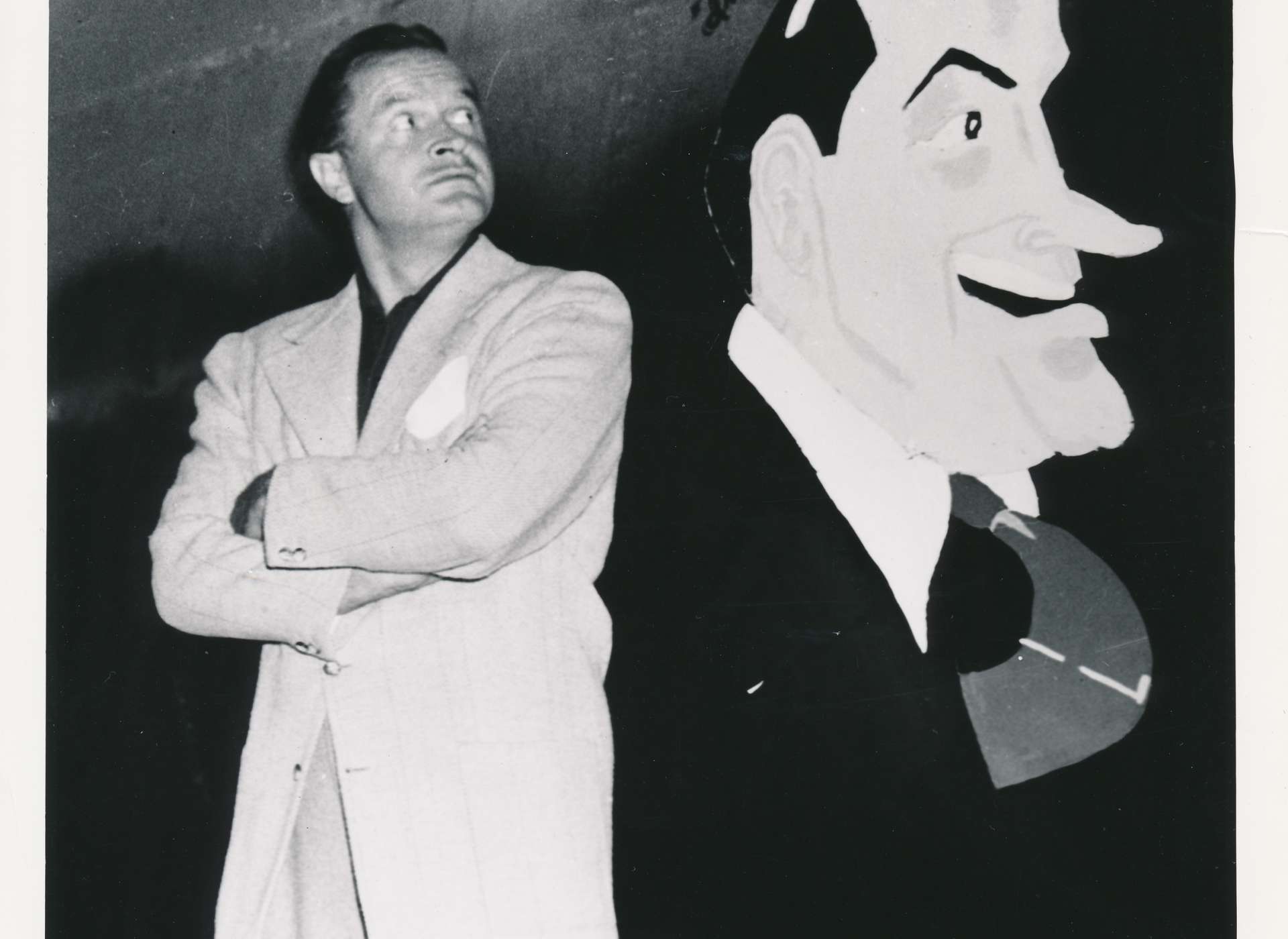Bob Hope, whose experiences entertaining troops and fund-raising during World War II recently joined the dozens of personal narratives tracked in the Museum’s Dog Tag Experience, is the subject of an upcoming episode of the PBS biography series American Masters. Selections from the episode, titled This is Bob Hope . . . , will screen at the Museum at 6:00 p.m. on October 12. A panel conversation will immediately follow the screening, with participants to include filmmaker John Scheinfeld, Executive Producer Michael Kantor, Bob Hope biographer Richard Zoglin, and Linda Hope, Chair/CEO of the Bob & Dolores Hope Foundation and Bob’s daughter.
The screening and Hope’s Dog Tag Experience are two of several ways the Museum will be honoring Bob Hope in the coming months. A BB’s Stage Door Canteen re-creation of a performance by one of Hope’s barnstorming troupes premieres in mid-October, and a film series and special exhibit are coming in 2018. A special traveling exhibition, Bob Hope: An American Treasure, A World Golf Hall of Fame Exhibit, was on display at the Museum in 2013.
Here’s a Q&A with Linda Hope touching on the Dog Tag Experience, the new documentary, and upcoming special exhibit.
Q: Bob Hope’s WWII story is now embedded in the Museum experience along with the stories of servicemembers and other witnesses to the war. Through his Dog Tag Experience, generations to come will learn of your father’s dedication to the troops and traveling to entertain them in the field—a singularly unique element of the American experience in World War II. How do you think he would feel about that? How do you feel about it?
A: I think he would have been very honored and very pleased to be there, represented with the servicemembers that he entertained during those days—the servicemembers he respected so much for what they were able to do, and their valor and their bravery. I think that it would’ve been a great thing for him to have known that he was there. I know that he’s someplace smiling and very happy that he’s involved with the Museum and being part of telling the story of World War II.
I’m personally thrilled that Dad is there at that wonderful Museum in New Orleans, and how young people will be able to understand who he was and what he did and how much entertainment contributed to that particular war. And I think it’s so important for young people to have an understanding of what the times were that dad operated in, and that these men and women served in a time when communication with home was so precious. It wasn’t the instant thing that it is now. People serving today can reach out and contact their loved ones and have that communication and that feeling of home pretty much instantly. In those days, a cherished letter from home would sometimes take weeks if not months to find its way to the person serving. It’s a great thing to try to let young people get into what life was like in those days, because I think they can better understand how great the sacrifice was.
The very first audience to see the Dog Tag Experience video was the young participants in the Bob & Dolores Hope Summer Theater Camp—perhaps the first time any of those middle school students had been exposed to your father’s legacy (see top photo). What do you hope their takeaways were?
I want people to come away with the concept of service. Bob Hope loved his adopted country and he was deeply touched by the sacrifice and courage of the men and women who served to protect its values during World War II. He wanted to bring his gift of laughter to those who needed it. He always felt that he was doing what he needed to do, and that each of us has something special to contribute, and that we have an obligation to do so.
-

Bob Hope’s contribution to morale across multiple wars was an invaluable asset of the American war effort.
-

Bob Hope’s contribution to morale across multiple wars was an invaluable asset of the American war effort.
-

Bob Hope’s contribution to morale across multiple wars was an invaluable asset of the American war effort.
-

Bob Hope’s contribution to morale across multiple wars was an invaluable asset of the American war effort.
-

Bob Hope’s contribution to morale across multiple wars was an invaluable asset of the American war effort.
-

Bob Hope’s contribution to morale across multiple wars was an invaluable asset of the American war effort.
-

Bob Hope’s contribution to morale across multiple wars was an invaluable asset of the American war effort.
-

Bob Hope’s contribution to morale across multiple wars was an invaluable asset of the American war effort.
-

Bob Hope’s contribution to morale across multiple wars was an invaluable asset of the American war effort.
-

Bob Hope’s contribution to morale across multiple wars was an invaluable asset of the American war effort.
-

Bob Hope’s contribution to morale across multiple wars was an invaluable asset of the American war effort.
The Dog Tag Experience narrative demonstrates how tireless your father was in his mission to bring a small touch of home to the troops—through music and laughter—as well as the humility he felt about the bravery of the soldiers on the front lines. When returning home from his trips, which of course continued for decades, did he ever speak of the experience, especially his feelings for the troops? Did he ever speak of specific WWII events or locations?
I was born in 1939, so you can tell by that I wasn’t fully aware of things. As a young adult, I certainly was aware of his coming and going on these long trips. My mother did her best to keep up a brave front, just like all of wives of people serving overseas. She feared for his safety, but never really communicated that much to us, but one had a sense of it.
I remember she used to always say to us that while we missed our dad for the weeks that he wasn’t there—particularly around the holidays—we had to think about all the other boys and girls whose dads were serving who had no opportunity to see their dad or brother or whatever for sometimes years. So, we were always aware of the sacrifice.
The debut of the Dog Tag Experience kicks off The Year of Bob Hope at the Museum—actually, A Couple of Years of Bob Hope. Have you enjoyed collaborating on the upcoming special exhibit? What are you most looking forward to seeing once it’s on display?
I am thrilled with the job the Museum has done in assembling the various sections of Bob Hope’s activities during World War II. I found them to be informative and very often touching. It made me very proud to be his daughter and proud to be the keeper of the flame along with the foundation he and my mother established. I am looking forward to seeing Dad's story intertwined with the stories of so many of the troops he entertained at the various theaters of war.
I’m looking forward to being able to just go through the Museum at a slower pace and really experience it. I’ve been through it a couple of different times. It takes more than one day to experience all The National WWII Museum has to offer to visitors
Regarding the American Masters episode, what do you think your father would think of the episode and its role in preserving his legacy for future generations?
I am looking forward to seeing the finished product. I think that my Dad would be pleased that a large television audience will be reminded of his contribution to American entertainment in the 20th century. The focus of this documentary—his "work"—would have pleased him. When asked if he would change anything if he had his life to live over again, he replied "I wouldn't have time." I think this film makes his statement very clear.
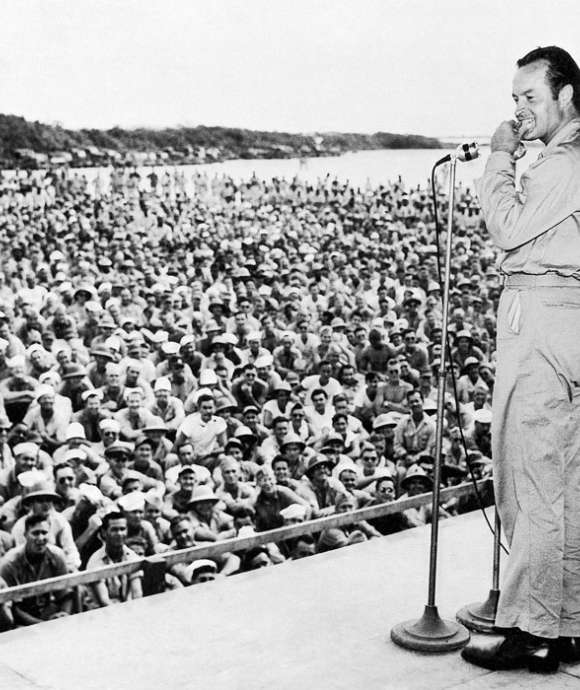
Film Screening - American Masters: This Is Bob Hope . . .
Join us for the premiere of American Masters: This Is Bob Hope . . .
